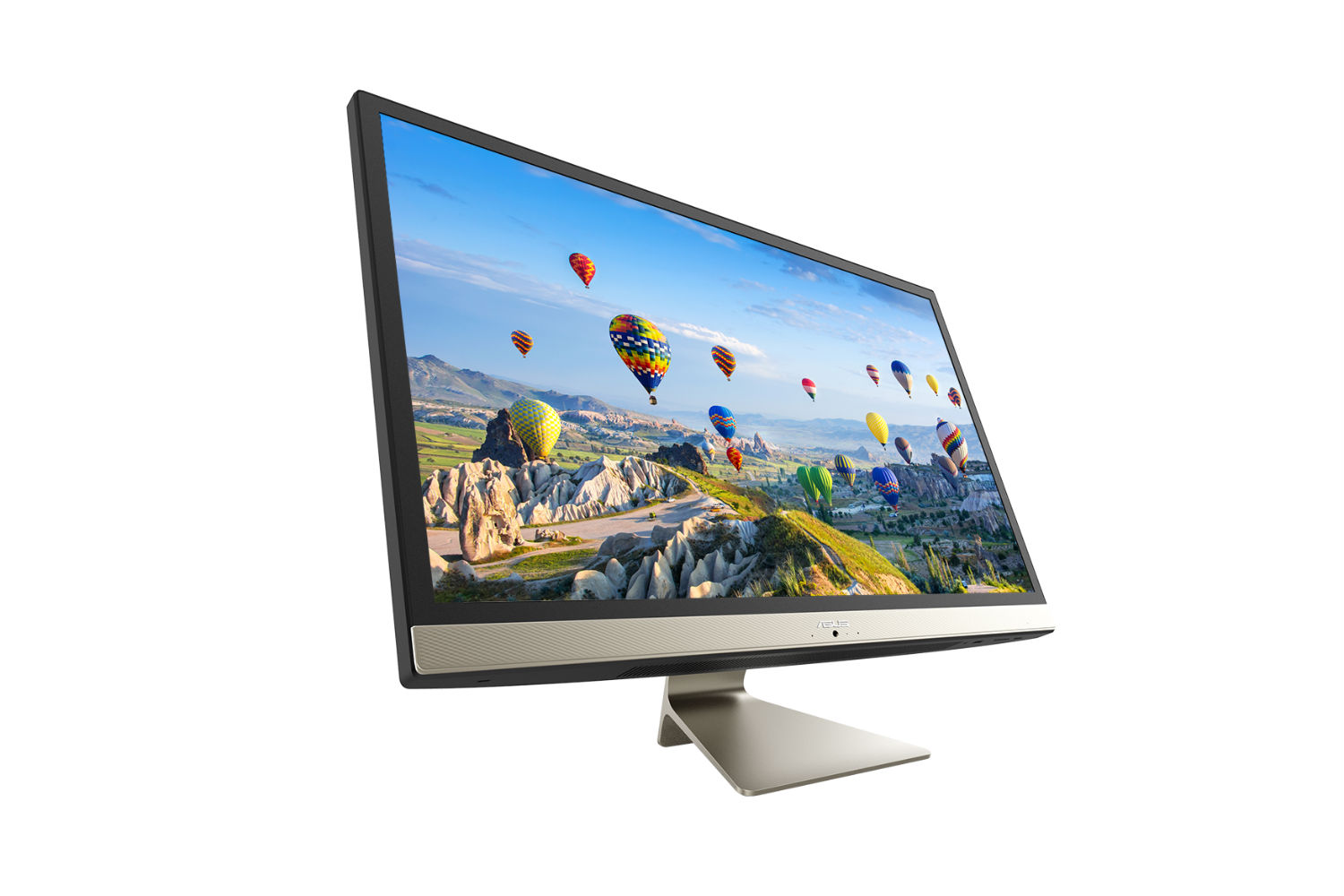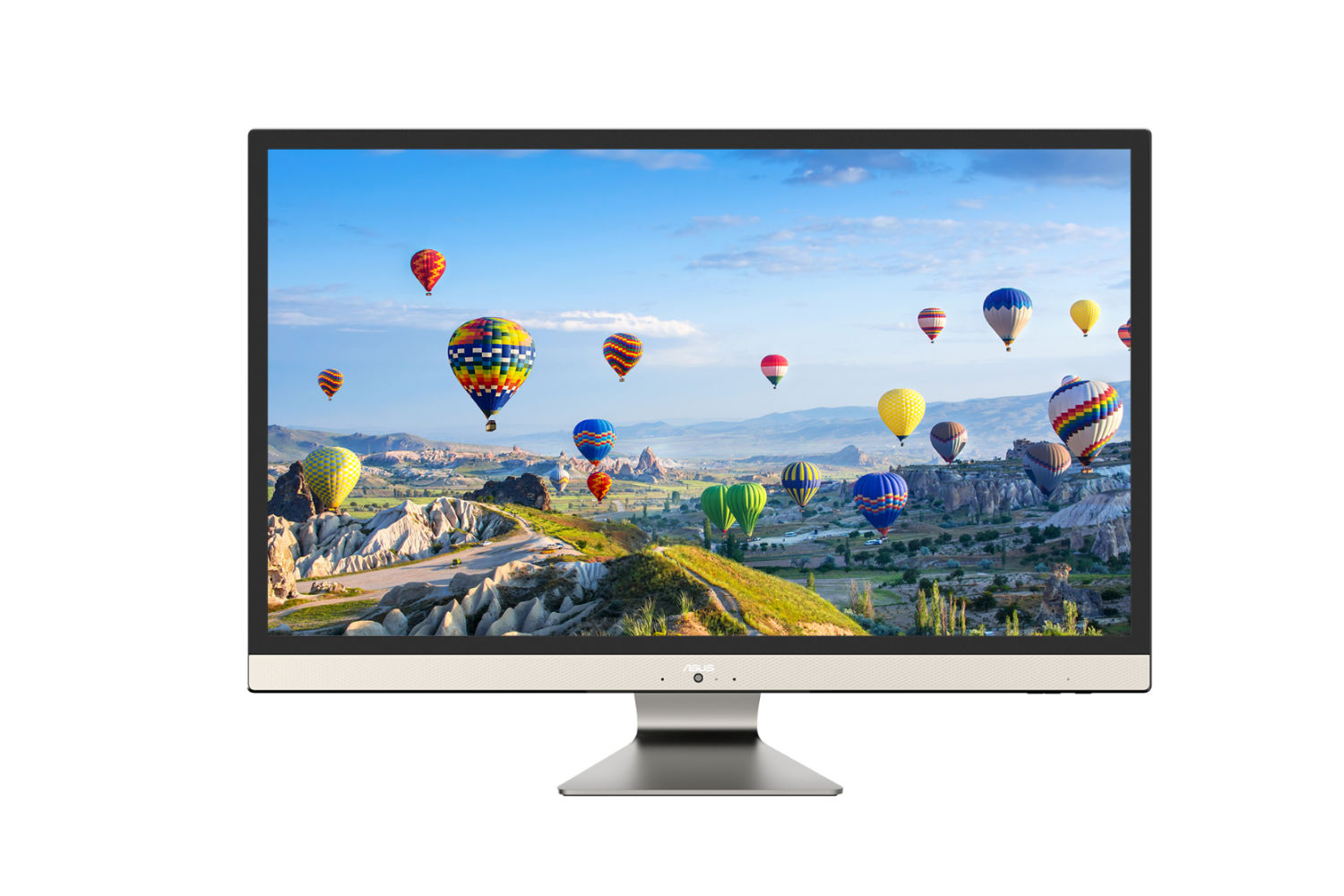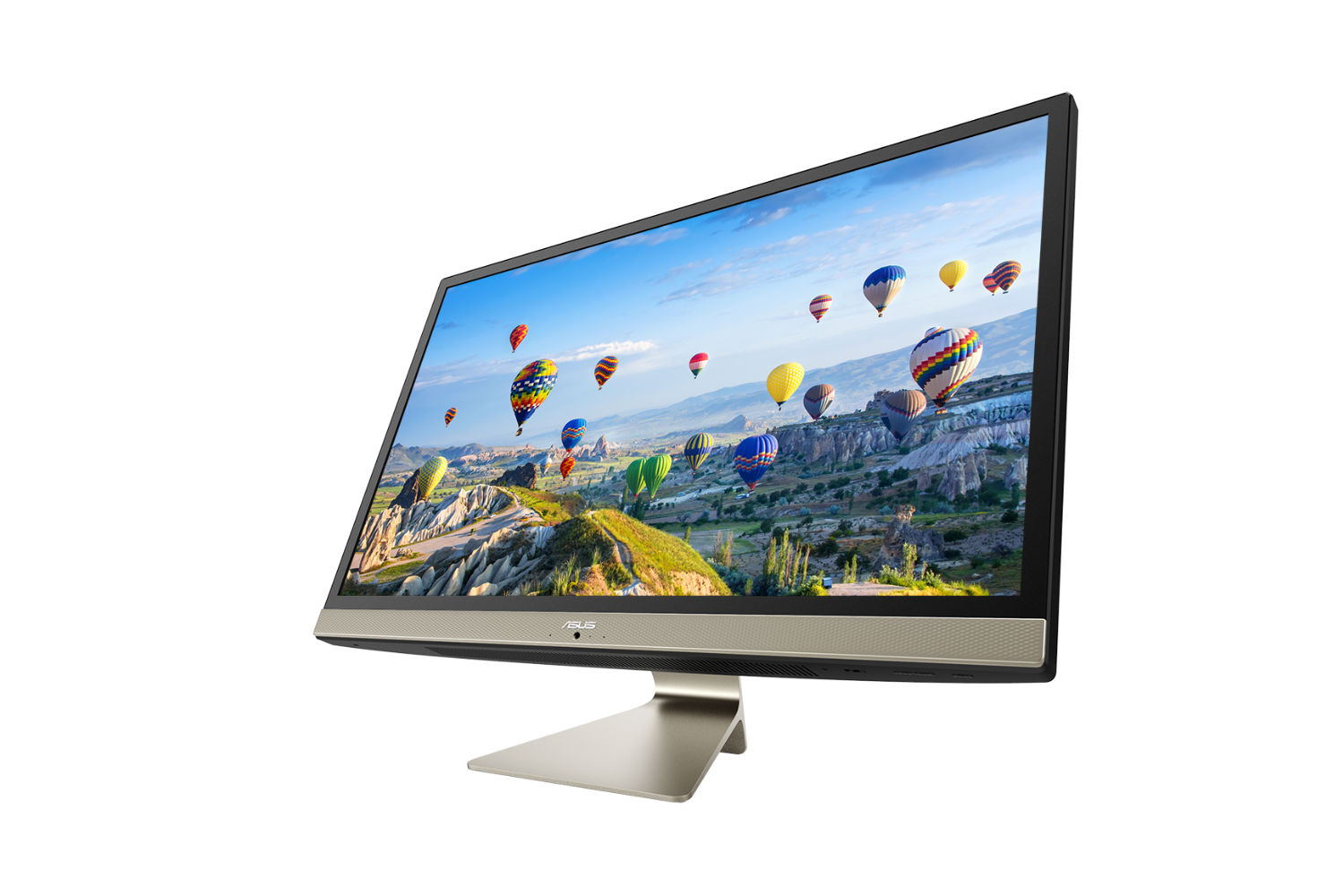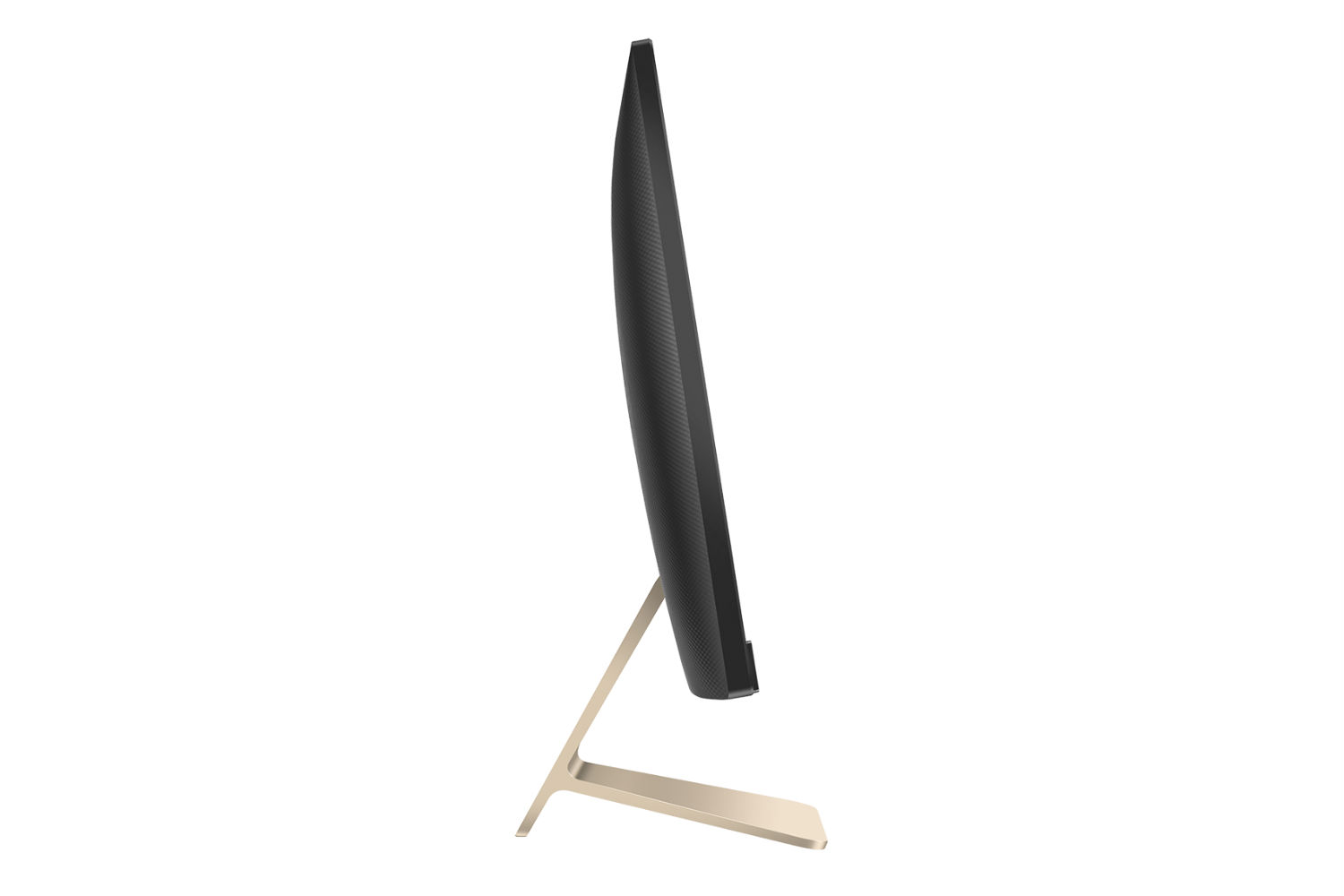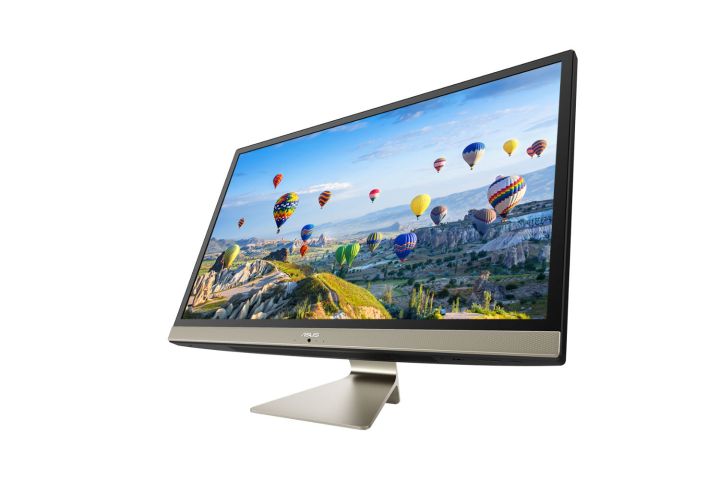
All-In-Ones
Asus AiO V272
Asus is introducing two new All-In-Ones: the AiO V272 and V222. These are all-in-one desktops, meaning Asus has stuffed all the internals components into the frame of the display. The first features a 27-inch, multitouch display, that the company says shows 100 percent of the sRGB color gamut. It didn’t mention anything about the AdobeRGB scale, or the resolution of the display.
As for the components, you’ll get an 8th-Gen Intel Core i7 processor and the Nvidia GeForce MX150. Asus didn’t offer details about storage or memory options.
Asus also mentioned the audio system, which claims to have “bass-reflex” speakers, and support for the Asus ZenAnywhere app to allow for remote access.
Asus AiO V222
The 22-inch version of Asus’ new All-In-One has a Full HD display, that has some slimmed-down bezels compared to the larger model. We are assuming that the V222 includes the same configuration options as the V272, but Asus did not mention what CPUs and GPUs would be available.
Outside of that, Asus claims similar features as the V272, including Cortana support, remote access, and bass-reflex speakers.
Both AiOs are due out in the first half of 2018, and pricing details will be available at launch.
Mini PCs
Asus PB40 mini PC

Asus announced two new mini PCs, which offer lower-power internals in a tiny, compact size. The PB40 mini PC features the Intel Pentium Silver processor, or a fanless design with a Celeron processor. Compared to Asus’ VivoMini series of mini PCs, these are much more nondescript, with a black, metallic chassis.
The PB40 mini also offers an impressive six USB-C ports, and something Asus calls “stackable modules,” which allows you to customize your system with modules like optical drives.
The PB40 mini PCs will be available in the first half of 2018, with pricing details to come.
Asus PN40 mini PC

The PN40 mini PC is the more compact model, coming in at just 1.93 inches tall and 1.54 pounds. Although we don’t have any information on configuration options, Asus mentions a “sliding bottom case design,” which sounds like a way to easily upgrade to the system.
The PN40 mini is powered by an Intel Pentium Silver or Intel Celeron processor, and offers both a USB-C port, and two USB-A ports.
The PN40 mini PCs will be available in the first half of 2018, with pricing details to come.
Asus Chromebox 3

Next up is a new Chrome OS desktop, the Asus Chromebox 3. This is an update to the Chromebox 2 from years ago, bringing it from 5th-Gen Core processors up to 8th Gen. In addition, Asus updated the I/O, replacing the USB-A ports with USB-C ports. Also included is a DisplayPort and HDMI port, which you’ll need to plug in your monitor or television.
Though they’ve been around for years, most Chromeboxes haven’t gotten updates recently. Only this year at CES have they starting to re-appear with Asus’ attempt and HP’s Chromebox G2. Of course, the Chromebox 3 runs Chrome OS, Google’s simplified operating system that revolves around the Google Chrome web browser. It will have Google Play support, which means it can run a number of Android apps.
The Chromebox 3 will be available in the first half of 2018, with pricing details to come.
Tinker Board S

If you consider yourself more of a tinkerer, Asus has a mini PC for you too – The Tinker Board S. This one is a update to the original Tinker Board, a single-board computer (SBC) meant to power DIY projects and hobbyists in the same vein as Raspberry Pi.
The new version features 2Gb of RAM and 16GB of eMMC storage, without having added any size to the board. The Tinker Board S will be available some time in the first half of 2018, with pricing details to come at launch.
